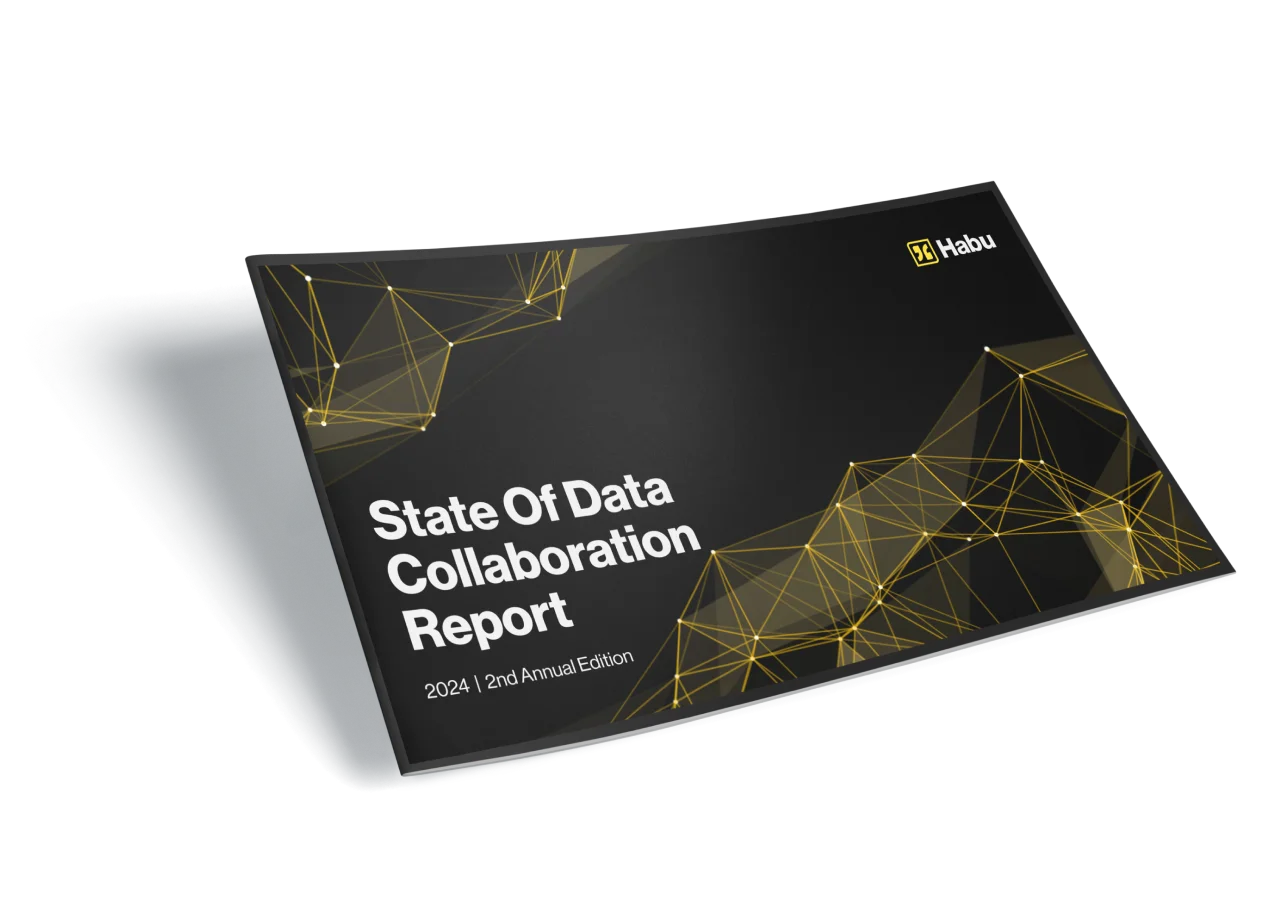The power of generative AI lies in its ability to learn patterns and structures from vast amounts of data and generate human-like text and other forms of coherent responses. We believe that generative AI will transform a wide range of applications, including dramatically increasing the velocity and value of data collaboration between partners in a data clean room. And, unlock the ability for enterprises to use clean rooms to tune or train their own proprietary AI models with context that can only be provided in collaboration with partners.
We recently announced a first phase of generative AI capabilities to help enterprises and their partners fuel collaboration insights and help our users be more productive. In this blog, I’ll elaborate on a few of the powerful new capabilities in Habu that are enabled by generative AI, and give you a preview of some of the exciting work our development team has in store by embracing this game-changing technology.
Offer “The Art of the Possible”
Today, the questions that get answered in a data clean room rely on a human to come up with the idea, then write the code to query the data and answer it. AI has the capability to suggest entirely new types of analyses based on the first-party and partner data that’s made available through a data clean room.
By understanding a user’s core objectives, such as maximizing Return on Ad Spend (ROAS), improving delivery, etc., Habu surfaces queries, KPIs, and alerts that are possible and valuable. For example, Habu might suggest a query to “see if a campaign overlaps any other campaigns by more than 30%”, or “set an alert if your CPA gets over $50 (by campaign, by week, or by channel)”. Users can then execute this query or set the alert as-is, or use additional AI interactions to modify it easily.
Over time, Habu will get even smarter about “the art of the possible”, refining the suggested queries and alerts based on user objectives and the KPIs/alerts that were previously set. It will also be able to suggest new questions based on first-party or partner data that is available, but not yet shared in a data clean room. And, do it in a private and secure way that never shares any organization’s data or IP.

Simplify and Scale Automation
As users in clean rooms discover new types of insights and outcomes they are interested in, those use cases need to be implemented which often takes new code, new configurations, and new approvals. Habu is using GenAI to make these tasks drastically easier by drafting code, evaluating privacy and governance rules, configuring templates, and more.

Learn Business and Market-Specific Context
Integration of AI from today’s conventional generalized Large Language Models (LLMs) will allow users to discover and implement the art of the possible in clean rooms. However, we are also seeing enterprises focused on training and tuning proprietary context-aware AI models using company-specific LLMs and Pathways Language Models (PaLMs). In this pursuit, they are also realizing that their context does not only exist in their own data, but also within the collaborations with their partners. Habu is making it easy for these organizations to utilize clean rooms to provide their own AI with this context in a privacy-safe manner.
Consider a CPG that participates in clean rooms with the four most prominent retailers in the U.S. Today, the CPG can analyze sales data of their own products at a granular level with each retailer. But, since the retailers also have similar data about some of their biggest competitors, the CPG’s LLM can be trained to understand who the competition is, which products compete in specific regions, and more. And, it can learn partner-specific details such as retailer loyalty card usage, store locations, and other key information. Given the proper context, the CPG can ask questions in natural language such as, “What’s my share of wallet, and how does that break down by region?” or “How did discounts impact our sales last quarter?”
Trained in privacy/governance safe-ways, these company-specific AI models will provide unprecedented insights and contextually relevant responses that are unique to your business – fundamentally changing how people use information and make critical decisions.
Conclusion
As the data clean room solution used by the world’s largest brands, retailers, media/CTV channels, and more, Habu is well-positioned to fully realize the power of generative AI. Our implementation will not only deliver new insights and productivity benefits in 2023, but also lay the groundwork to provide powerful, contextually relevant answers to even more advanced questions to come.
For details about some of the other exciting new capabilities we’ve recently introduced, check this out.


